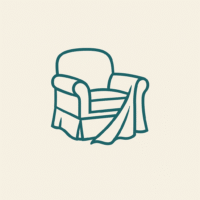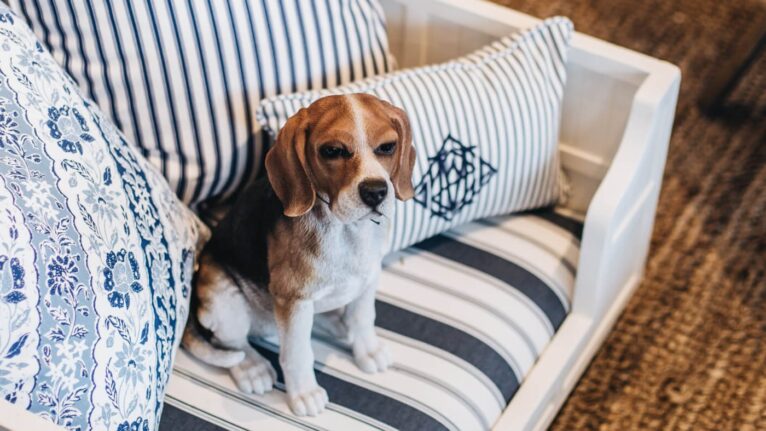Sharing your home with pets doesn’t mean giving up on stylish interiors. With thoughtful planning and the right materials, it’s possible to create a home that’s both beautiful and pet-proof. Whether you’re designing around a playful pup or a curious cat, this guide explores how to balance aesthetics with practicality so that you—and your furry friends—can live in harmony.
Why Pet-Friendly Design Matters
Designing with pets in mind can:
- Prolong the life of your furniture and finishes
- Reduce cleaning time and wear
- Enhance your pet’s comfort and safety
- Maintain the overall aesthetic of your space
Instead of retrofitting a space for pets, consider their needs from the beginning. It leads to better flow, durability, and happiness for everyone in the home.
Table: Design Element vs. Pet-Friendly Rating
| Design Element | Recommended Materials | Pet-Friendly Rating | Notes |
|---|---|---|---|
| Flooring | Tile, luxury vinyl, sealed concrete | ★★★★★ | Scratch-resistant and easy to clean |
| Upholstery | Leather, performance fabric | ★★★★☆ | Choose tight weaves and darker colors |
| Rugs | Indoor/outdoor, low-pile wool | ★★★☆☆ | Avoid shag or looped textures |
| Paint | Semi-gloss, scrubbable matte | ★★★★☆ | Washable finishes are essential |
| Wall Treatments | Tile, beadboard, washable wallpaper | ★★★★☆ | Especially in high-traffic pet zones |
Best Flooring Options for Homes with Pets
- Tile: Durable, waterproof, easy to clean
- Luxury Vinyl Plank (LVP): Resilient, stylish, soft underfoot
- Sealed Concrete: Minimalist and ultra-durable
- Avoid: Unsealed hardwood, carpet, and laminate with low wear resistance
Pet-Friendly Furniture Tips
- Choose pieces with removable, washable slipcovers
- Opt for medium to dark fabrics to hide fur and stains
- Avoid delicate or easily scratched materials like silk or chenille
- Look for elevated furniture to minimize fur and dander buildup underneath
Upholstery Materials to Consider:
- Leather: Wipes clean easily and resists odors
- Performance Fabric: Stain-resistant and durable
- Outdoor Fabric: Stylish and rugged for high-use zones
Smart Storage for Pet Essentials
Clutter is the enemy of good design. Use smart storage to keep toys, food, and grooming tools hidden but accessible.
- Built-in drawers in mudrooms
- Stylish bins and baskets
- Cabinets with pull-out food stations
- Wall hooks for leashes and collars
Designing Pet Zones That Fit Your Home
Pets need their own spaces to feel secure and relaxed. You can integrate these zones into your overall design:
- Pet Nook: A built-in under stairs or in the laundry room
- Pet Bed Area: Match with existing décor and add comfy bedding
- Feeding Station: Built-in feeding bowls in kitchen toe kicks
- Pet Bathing Station: Add a mini shower in the mudroom or laundry
Indoor Plants: Safe vs. Toxic
Designers often use greenery to add life and texture, but some plants are hazardous to pets.
Safe Plants:
- Spider Plant
- Areca Palm
- Calathea
- Boston Fern
Toxic to Pets:
- Philodendron
- Pothos
- Snake Plant
- Peace Lily
Choose plant stands or hanging planters to avoid digging or chewing.
Lighting, Window Treatments & Pets
- Avoid long drapes that can be tugged or tangled
- Use cordless blinds or Roman shades for safety
- Place furniture so pets can enjoy natural light and views
- Add night lights in pet zones for older animals
Pet-Proofing High-Traffic Areas
- Use entry rugs to catch dirt and moisture
- Install durable wall finishes (beadboard, wainscoting)
- Add a gate or divider for zoning without permanent barriers
Odor and Air Quality Considerations
- Use washable, non-porous materials
- Add air purifiers to trap dander and fur
- Choose low-VOC paints and finishes for sensitive pets
Integrating Design and Pet Tech
Smart home gadgets can help balance lifestyle and design:
- Automated feeders that blend into cabinetry
- Discreet pet cameras for monitoring
- Smart dog doors that lock when needed
- Custom furniture with built-in pet crates
Style-Specific Tips
Modern
- Sleek leather sofas, modular storage, minimal color palette
Farmhouse
- Woven baskets, wood floors, washable slipcovers
Bohemian
- Layered rugs (with washable bases), plants (in safe hanging pots), global textiles
Scandinavian
- Light woods, neutral fabrics, low-profile pet beds
Mistakes to Avoid
- Choosing light-colored fabrics without protective coatings
- Using wool rugs in pet entry areas
- Placing litter boxes in high-traffic visual zones
- Ignoring storage for supplies
Creating a stylish, functional home doesn’t mean compromising on your pet’s comfort—or your aesthetic. With the right materials, thoughtful layout choices, and a bit of creativity, you can design a home that’s beautiful, practical, and perfectly suited for both people and pets.
Pet-friendly design is simply good design—it’s resilient, intentional, and joyful. And when done right, it’s a win-win for everyone with paws or feet under your roof.


Leave a Reply